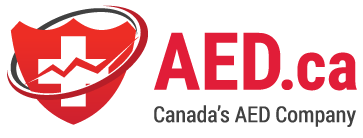Understanding the Basics of AEDs
Automated External Defibrillators (AEDs) are life-saving devices designed to deliver an electric shock to a person experiencing sudden cardiac arrest. When used promptly and correctly, they can significantly increase the chances of survival. However, knowing when to use an AED is crucial, as it requires understanding the signs of cardiac arrest and the steps to take in an emergency situation.
Recognizing Cardiac Arrest
Cardiac arrest occurs when the heart suddenly stops beating effectively. It can happen for various reasons, including a heart attack, arrhythmia, drowning, or severe trauma. When someone is in cardiac arrest, they will lose consciousness, stop breathing, and have no pulse.
Key Signs of Cardiac Arrest:
1. Loss of Consciousness: The person will collapse and be unresponsive.
2. Absence of Normal Breathing: Check for breathing by looking, listening, and feeling for any signs of breath. Gasping is not considered normal breathing.
3. No Pulse: In a cardiac arrest situation, there will be no palpable pulse at major pulse points (carotid, femoral, or radial arteries).
The Role of AEDs
AEDs are portable electronic devices that can analyze the heart's rhythm and, if necessary, deliver an electric shock to restore a normal heartbeat. They are designed to be user-friendly, providing clear audio and visual instructions to guide even untrained individuals through the process.
When to Use an AED
1. Confirm Unresponsiveness and Absence of Breathing: Before using an AED, make sure the person is unresponsive and not breathing normally. If you are unsure, begin CPR (Cardiopulmonary Resuscitation) immediately.
2. Activate Emergency Medical Services (EMS): If you are alone, activate EMS (call 911 or your local emergency number) or ask someone nearby to do so. Time is crucial in a cardiac arrest situation.
3. Retrieve the AED: If an AED is available, send someone to fetch it while you continue to provide CPR.
4. Apply the AED Pads: Remove any clothing from the person's chest. Attach the AED pads as indicated in the device's instructions. Usually, one pad goes on the upper-right chest, just below the collarbone, and the other on the left side, just below the armpit.
5. Follow AED Prompts: The AED will analyze the person's heart rhythm. It will advise whether or not a shock is needed. Ensure that no one is touching the person when the AED delivers a shock.
6. Resume CPR: If the AED advises a shock, after it's delivered, resume CPR immediately. Continue following the prompts until professional help arrives.
Remember:
- Always ensure your safety and the safety of others around you.
- If you are uncertain about whether to use an AED, it is generally better to use it than not. The device is designed to assess the situation and will not deliver a shock unless it is necessary.
- Once an AED is attached, avoid touching the person while the device is analyzing or delivering a shock.
Conclusion
Knowing when to use an AED is a critical skill that can save lives. By recognizing the signs of cardiac arrest and understanding the steps to take in an emergency, you can provide timely and effective assistance. Remember to always prioritize safety and call for professional help as soon as possible. AEDs are powerful tools, and when used in conjunction with CPR, they significantly improve the chances of survival for someone experiencing sudden cardiac arrest.
Order you AED today at https://aed.ca/collections/cardiac-science
Safety First AED Machine What is an AED Where get an AED AED Canada






